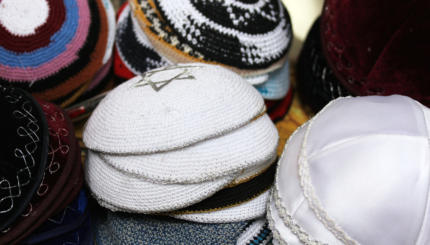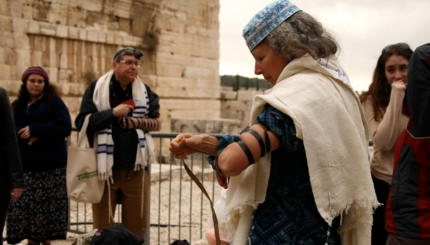I wanted to respond to a critique of a blog post of mine by Rabbi Jill Jacobs over at Jspot.
First of all, I appreciate the post by Jill and her colleague Hannah Farber (who is mentioned in the article), which was thought-provoking for me.
Now let me begin by saying that if the offending blog we both mention had put up a picture of an overweight, schlubby male rabbi, I would have had different, but related issues to the way that our public representatives carry themselves. There is an aspect related to ma’arit ayin that I believe holds true here, regardless of gender.
But on to the issue relating to women. I think it’s fair to say that most people who wear tallitot and/or kippot, male or female, do think about the garments’ look and their appearance in them. If not, there wouldn’t be hundreds if not thousands of different colors, shapes, and sizes. There are even more masculine and more feminine versions. When people shop for tallitot, in particular, they frequently try them on to make sure they “fit.” Similarly, many people match their kippot to their outfit.
My problem comes when women assume that being egalitarian means doing that which used to be masculine. I try to embrace both egalitarianism and femininity at the same time. There are plenty of more feminine tallitot that are specifically meant to fit a woman’s body. By wearing this type of garment, one could both fulfill the obligation of the mitzvot and celebrate being a woman. In the process they would truly be displaying the value of hiddur mitzvah, making the observance of a mitzvah beautiful.
The same can be said even more so for kippot. This has traditionally been a man’s garment. And there are plenty of feminine options: hats, lace coverings, scarves. As a married Jew who davens at a Conservative synagogue, I always cover my head during services. But never with a kippah. On Shabbat I wear hats and during the week, I carry an extra lace doily in my pocket. This has led to confusion by other people who somehow assume that my hat-wearing makes me Orthodox. But rather, it is my desire to still be a stylish young woman and observe traditions that leads me to do this. Though it is completely irrational, the sight of a woman in a kippah always makes me as a woman feel uncomfortable. I have learned to accept that many other women will wear one, but I never will.
And so perhaps, I misstated my original thought. What is unflattering are those women who believe that being feminine and progressive are two opposites. That in order to wear ritual garments, one must wear that which men have been wearing for thousands of years–those which in their design were not meant to be worn by women–instead of looking to the unique side of femininity in Judaism.
kippah
Pronounced: KEE-pah or kee-PAH, Origin: Hebrew, a small hat or head covering that Orthodox Jewish men wear every day, and that other Jews wear when studying, praying or entering a sacred space. Also known as a yarmulke.
mitzvah
Pronounced: MITZ-vuh or meetz-VAH, Origin: Hebrew, commandment, also used to mean good deed.
Shabbat
Pronounced: shuh-BAHT or shah-BAHT, Origin: Hebrew, the Sabbath, from sundown Friday to sundown Saturday.


